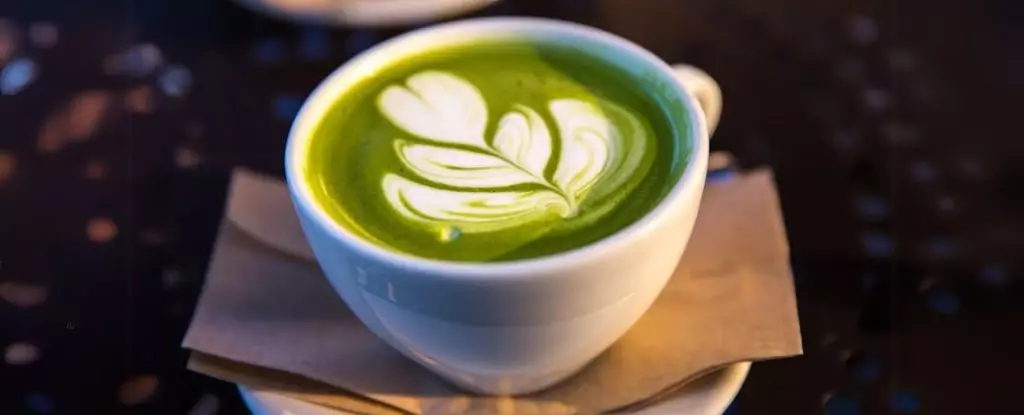Matcha, the emerald-green elixir that has captivated health enthusiasts globally, is much more than a trend; it embodies centuries of tradition and a deep cultural significance, particularly in Japan. But its roots actually trace back to China, where it first gained popularity centuries ago. When Japanese Buddhist monks introduced matcha to their homeland in the 12th century, they discovered a versatile method to enhance meditation practices through this finely powdered tea. This historical pivot underpins matcha’s transformation from a Chinese staple to a symbol of Japanese refinement and mindfulness, culminating in the intricate tea ceremonies that emphasize tranquility and respect for nature.
What sets matcha apart from standard green tea lies not only in its origins but significantly in its cultivation and preparation methods. The Camellia sinensis plant, the source for both matcha and green tea, undergoes a different process to yield matcha. Shade cultivation before harvesting alters its chemical composition, dramatically increasing its chlorophyll and amino acid profiles, which leads to a uniquely robust flavor and vibrant color. After being harvested, the leaves are meticulously dried and ground, producing a fine powder that retains the essence of the whole leaf. Understanding this transformation offers valuable insight into the elevated nutritional benefits that matcha has to offer compared to its green tea counterpart.
Health Benefits: Promising but Cautious
In the realm of health, matcha is often heralded as a superfood, boasting an impressive concentration of antioxidants, particularly polyphenols like flavonoids. These compounds are celebrated for their potential to lower inflammation, combat oxidative stress, and bolster overall health. However, it is crucial to note that while preliminary studies suggest numerous benefits—including improved cognitive function, enhanced heart health, and even anti-cancer properties—most of the existing evidence stems from laboratory research, often conducted on animals or cells, rather than expansive human trials. This discrepancy highlights a critical essentiality for caution. Although the claims surrounding matcha are enticing, they demand a more rigorous scientific foundation to validate their efficacy.
Interestingly, the health benefits attributed to matcha extend beyond mere antioxidants. The presence of caffeine, albeit in moderate amounts less than coffee, contributes to increased alertness and focus while still engaging the body’s relaxation response through L-theanine, another biochemical treasure found in matcha. This amino acid can ameliorate stress levels by inducing calmness without the jitters commonly associated with traditional caffeine consumption. Thus, those seeking a balanced energy boost may find matcha to be the ideal compromise between alertness and tranquility, a rare duality difficult to achieve with regular coffee.
Comparative Analysis: Matcha vs. Coffee
When juxtaposing the merits of matcha and coffee, it quickly becomes evident that each beverage possesses unique advantages. Coffee is often lauded for its extensive body of research supporting its health benefits, with recommendations suggesting three to four cups as a safe intake. In contrast, matcha’s guidance leans towards moderation, typically advocating for one to three cups daily. This distinction stems from matcha’s higher concentrations of certain compounds that can influence iron absorption, particularly for individuals adhering to plant-based diets or those susceptible to anemia.
Both matcha and coffee possess antioxidants that support cardiovascular health. However, excessive consumption of either can pose challenges, especially regarding iron absorption from plant sources. Incorporating both beverages into one’s routine necessitates mindful timing, allowing for optimal nutritional efficacy. Consuming these drinks away from mealtimes is prudent for individuals mindful of iron levels to mitigate the risk of deficiency.
The Balance: Personal Preferences
Ultimately, the choice between matcha and coffee comes down to individual constitution and lifestyle preferences. For many, coffee serves as a beloved ritual, bolstered by its robust flavor profiles and the kick it provides. Conversely, matcha appeals to those who desire a more moderate caffeine experience without sacrificing health benefits. It symbolizes a journey towards holistic well-being, where enjoyment and mindfulness intersect uniquely.
While navigating the caffeine landscape, it is crucial to incorporate matcha or coffee into daily life thoughtfully. Observing individual tolerance levels and recognizing when and how these beverages are consumed can foster a more harmonious relationship with them. For those seeking a vibrant, health-boosting alternative that marries centuries-old tradition with modern nutritional wisdom, matcha not only holds promise; it actively engages with the delicate balance of wellness and enjoyment.


Leave a Reply